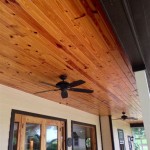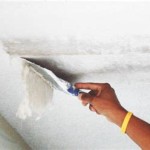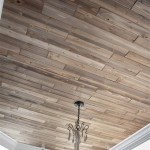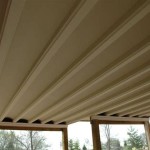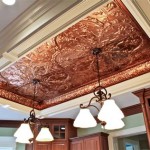How to Do Ceiling Design
The ceiling, often overlooked in interior design, plays a crucial role in setting the ambiance of a room. A well-designed ceiling can elevate the space, enhance its functionality, and create a focal point that draws the eye upwards. Whether you're embarking on a complete renovation or simply seeking to refresh a tired room, understanding the fundamentals of ceiling design can help you achieve your desired aesthetic and elevate your interior design skills.
Understanding the Basics of Ceiling Design
Before diving into specific design techniques, it's essential to grasp the fundamental principles that govern ceiling design. These elements work together to create a harmonious and visually appealing result.
- Height: The height of your ceiling significantly influences design choices. High ceilings allow for more dramatic features, while lower ceilings benefit from minimalist designs.
- Shape: Ceilings can be flat, vaulted, beamed, or even curved, each impacting the room's overall feel.
- Material: From drywall and plaster to wood and metal, the choice of material affects the appearance, texture, and acoustic properties.
- Color: Ceiling color can dramatically alter the perception of space. Light colors create a sense of openness, while darker colors create a more intimate feel.
- Lighting: Lighting is key to highlighting ceiling design elements and creating the desired ambiance.
By considering these factors, you can make informed decisions about the style, functionality, and overall impact of your ceiling design.
Popular Ceiling Design Techniques
Ceiling design offers a variety of techniques to enhance your space. Here are some popular methods used to create stunning and functional ceilings.
1. Coffered Ceilings
Coffered ceilings feature a grid pattern of recessed panels, often adorned with molding. This design adds architectural interest, depth, and a touch of elegance. Coffered ceilings work well in formal spaces like dining rooms, libraries, and living rooms.
2. Tray Ceilings
Tray ceilings are characterized by a recessed, often rectangular, panel that is framed by molding. This design adds a sense of grandeur and sophistication, particularly when incorporated into bedrooms, living rooms, or entryways.
3. Vaulted Ceilings
Vaulted ceilings create an expansive and airy feel. They typically involve an angled or curved structure, rising from the walls to a central point. Vaulted ceilings are popular in modern and contemporary homes and often enhance the sense of space in large living areas or bedrooms.
4. Beamed Ceilings
Beamed ceilings add a rustic charm and warmth to a room. Exposed beams, typically made of wood, can create a focal point and enhance the architectural interest. Beamed ceilings are often found in traditional homes and are especially well-suited for spacious living rooms or family rooms.
5. Decorative Molding
Molding can be used to enhance the appearance of any ceiling, regardless of its design. Crown molding, for example, adds a touch of elegance and creates a transition between the wall and the ceiling. Other decorative moldings, such as chair rails, can be used to create visual interest and divide the space.
Practical Considerations for Ceiling Design
Beyond aesthetics, ceiling design plays a crucial role in functionality and practicality. Consider these factors when making your design choices:
1. Acoustics
The material and texture of your ceiling can affect sound reflection and absorption. If you want to create a quieter and more intimate atmosphere, consider using sound-absorbing materials like acoustic tiles or fabric panels.
2. Lighting
Ceiling lighting can significantly impact the overall effect of your design. Choose lighting fixtures that complement the style of your ceiling and provide the desired level of light for the space. Recessed lighting can be used to create an understated yet functional look, while chandeliers and pendant lights can add a touch of drama or elegance.
3. Maintenance
Choose materials and finishes that are easy to clean and maintain. A textured ceiling might look beautiful, but it can be difficult to dust and clean. Consider the longevity of your design and opt for practical choices that will withstand the test of time.
By carefully considering these factors, you can ensure that your ceiling design is not only visually appealing but also functional and practical.

Ceiling Decoration Ideas Diy For Ceilings Addicted 2 Decorating

5 Diffe Types Of Ceilings For Your Custom Home Chg

Create Ceiling From Gypsum Board Installation Diy

Coffered Ceiling Design Ideas

10 Wooden False Ceiling Designs You Will Love For Your Home Livspace

Modern Ceiling Design Ideas For Interior Shalini Misra

Roundup 10 Diy Ceiling Embellishment Projects Coffered Design

10 Stunning False Ceiling Room Designs To Elevate Your Home Nerolac

33 Modern Ceiling Design Ideas For All The Rooms In Your Home Decoist

Simple Small Bedroom Ceiling Design For Your Living Room
Related Posts

